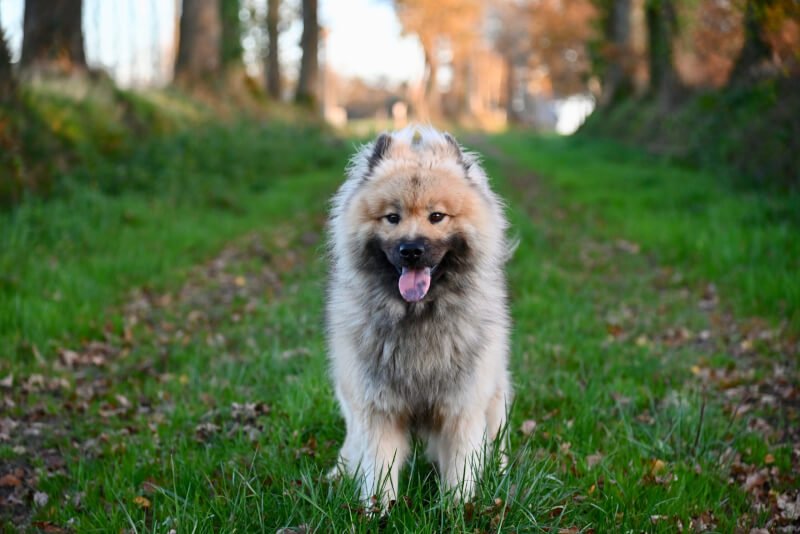Have you ever wondered if dog training can effectively address aggression in your furry friend? In this article, we explore the potential benefits of dog training when it comes to tackling aggression in dogs. Whether it’s barking, growling, or even biting, understanding the role that training plays in curbing these aggressive behaviors can be the key to a happier and more harmonious relationship with your four-legged companion. We’ll discuss the importance of proper training techniques, the positive impact it can have on dogs with aggression issues, and the potential for a transformed and well-behaved pet. Join us as we uncover the power of dog training in addressing aggression, and discover how it can pave the way for a more joyful and tranquil life with your beloved canine.
Understanding Aggression in Dogs
Aggression in dogs can be a concerning and challenging issue for pet owners. It is crucial to understand the different types of aggression, their causes, and the signs to look out for in order to address and manage this behavior effectively.
Ready for Cat Trivia?
Test your knowledge about cats!

Types of Aggression
There are several types of aggression that dogs may display. These include fear-based aggression, territorial aggression, and dominance aggression. Fear-based aggression occurs when a dog feels threatened or scared, leading to defensive or reactive behavior. Territorial aggression is seen when a dog tries to protect its territory from perceived intruders. Dominance aggression stems from a dog’s desire to establish dominance over other animals or humans.
Causes of Aggression
Aggression in dogs can have various underlying causes. It may be a result of fear, anxiety, past traumatic experiences, lack of socialization, medical issues, or even genetics. Identifying the root cause of aggression is essential for implementing appropriate training and behavior modification techniques.
Signs of Aggression
Recognizing the signs of aggression is crucial for the safety of both the dog and the people around them. Common signs include growling, barking, lunging, snarling, snapping, and biting. Dogs may also display aggressive body language such as raised hackles, stiff posture, and a fixed stare. Understanding these signs can help intervene before aggressive behavior escalates.
Importance of Addressing Aggression
Addressing aggression in dogs is of utmost importance for a variety of reasons. Failing to address aggressive behavior can have serious consequences, negatively impacting the safety of the dog, the owner, and others in the community.
Safety Concerns
Aggressive behavior in dogs poses immediate safety concerns. A dog with aggressive tendencies can harm other animals, humans, or even themselves. Addressing aggression is essential for maintaining a safe environment for everyone involved.
Legal Implications
Aggressive dogs can create legal problems for their owners. If a dog bites or injures someone, the owner may be held liable for the damages. It is crucial to take proactive steps to address aggression to avoid legal complications and protect both the dog and the owner.
Improved Quality of Life for Dog and Owner
Untreated aggression can significantly impact the quality of life for both the dog and its owner. Aggressive dogs may experience chronic stress, limited social interactions, and decreased opportunities for exercise and mental stimulation. By addressing aggression through training and behavior modification, the dog can live a happier, more fulfilling life, and the owner can enjoy a harmonious companionship.

Benefits of Dog Training for Aggression
Dog training plays a vital role in addressing aggression and modifying behavior. It offers numerous benefits for both the dog and the owner, creating a positive and rewarding relationship.
Building Trust and Communication
Training provides an opportunity to build trust and strengthen the bond between the dog and its owner. By establishing clear communication channels, the dog becomes more responsive and receptive to commands, making it easier to address aggressive tendencies.
Establishing Boundaries and Structure
Setting boundaries and providing structure through training helps dogs understand their role within the household. Consistent training reinforces rules and expectations, reducing anxiety and uncertainty, which can contribute to aggression.
Teaching Alternative Behaviors
Training allows for the teaching of alternative behaviors to replace aggressive tendencies. Through positive reinforcement techniques, dogs can learn to respond to commands, redirect their focus, and engage in desirable behaviors instead of resorting to aggression.
Choosing the Right Training Approach
When addressing aggression in dogs, it is crucial to select the most appropriate training approach based on the individual dog’s behavior and needs. Several effective methods can be employed.
Positive Reinforcement Methods
Positive reinforcement training focuses on rewarding desired behaviors rather than punishing unwanted ones. This approach utilizes treats, praise, and rewards to encourage and reinforce good behavior, promoting a positive learning experience for the dog.
Clicker Training
Clicker training is a specific form of positive reinforcement which uses a clicking sound to mark desired behavior, followed by a reward. This technique helps dogs understand and associate the behavior being reinforced, leading to effective behavior modification.
Behavior Adjustment Training (BAT)
Behavior Adjustment Training (BAT) is a systematic and gentle desensitization approach that helps dogs learn to cope with their triggers. It allows them to make their own choices and gradually change their emotional response in challenging situations, reducing the likelihood of aggressive reactions.
Desensitization and Counterconditioning
Desensitization and counterconditioning involve gradually exposing the dog to the stimuli that trigger aggression while pairing it with positive experiences. This helps change the dog’s emotional response from fear or aggression to a more positive association.

Working with a Professional Trainer
Addressing aggression in dogs can be complex and challenging, requiring the expertise and guidance of a professional trainer or behaviorist. Their specialized knowledge and experience can greatly enhance the training process.
Assessment of Aggression
A professional trainer will conduct a thorough assessment of the dog’s aggression to identify its underlying causes and triggers. This assessment helps tailor a training program specifically designed to address the dog’s specific needs and behavioral issues.
Tailored Training Programs
Professional trainers develop individualized training programs that focus on modifying aggressive behavior. These programs include a combination of training techniques, behavior modification strategies, and management approaches to ensure optimal results.
Guidance and Support
Working with a professional trainer provides ongoing guidance and support throughout the training process. They can provide valuable insights, answer questions, and offer assistance in managing and addressing aggressive behavior in a safe and effective manner.
Training Techniques for Aggressive Dogs
When training aggressive dogs, specific techniques can be employed to address their unique behavioral challenges.
Reward-Based Training
Reward-based training focuses on reinforcing desirable behaviors through positive reinforcement. It involves rewarding the dog with treats, praise, or play for exhibiting calm and non-aggressive behavior. This approach helps dogs associate good behavior with rewards, encouraging them to repeat those behaviors.
Obedience Training
Obedience training is a fundamental component in modifying aggressive behavior. Teaching basic obedience commands, such as “sit,” “stay,” and “leave it,” establishes clear communication and control over the dog. Consistent obedience training helps redirect and manage aggressive tendencies effectively.
Socialization
Socialization plays a crucial role in reducing aggression in dogs. Exposing dogs to various people, animals, and environments from a young age helps them learn appropriate social behaviors and reduces fear or anxiety-based aggression. Gradual and controlled socialization should be undertaken with the guidance of a professional trainer.
Focus and Attention Exercises
Training exercises that improve a dog’s focus and attention can be beneficial for addressing aggressive behavior. Teaching the dog to maintain eye contact, respond to their name, and ignore distractions can redirect their focus away from aggressive triggers and towards positive interactions.
Redirecting Aggressive Behaviors
Redirecting aggressive behaviors involves teaching the dog alternative behaviors to replace aggression. This can include commands such as “sit,” “down,” or “leave it,” which divert the dog’s attention and provide an outlet for its energy in a non-aggressive manner.

Management Strategies for Aggressive Behaviors
In addition to training, implementing management strategies is essential for mitigating the risk of aggressive behavior and ensuring overall safety.
Leash and Muzzle Training
Leash training is a useful management strategy to maintain control over an aggressive dog during walks or encounters with potential triggers. Muzzle training, when necessary, prevents biting and provides an extra layer of safety during interactions with people or animals.
Environmental Management
Creating a safe and secure environment is crucial for reducing aggressive behavior. Managing the dog’s environment includes removing potential triggers, providing a designated safe space, and ensuring the dog has access to mental and physical enrichment.
Avoidance Techniques
Avoidance techniques involve identifying and avoiding situations that trigger aggression in the dog. This may involve altering daily routines, avoiding specific locations, or limiting interactions with known triggers. By proactively avoiding triggers, the likelihood of aggressive behavior can be minimized.
Consistency and Patience in Training
Consistency and patience are key elements when training an aggressive dog. Modifying behavior takes time, and it is important to establish a routine and maintain consistency in training efforts.
Establishing Routine
Establishing a training routine helps the dog understand expectations and reduces anxiety. Consistency in training sessions, timing, and commands provides a structured environment that the dog can rely on, promoting better behavior and reducing aggression.
Repetition of Training Exercises
Repetition is a vital part of training. Consistently practicing training exercises and commands reinforces learning, facilitating behavior modification. Repeating exercises in different locations and scenarios helps the dog generalize their training, responding appropriately in various situations.
Avoid Punishment-based Methods
Using punishment-based methods when training aggressive dogs can be counterproductive and potentially exacerbate aggression. Punishment may increase fear or anxiety, leading to more aggression. It is essential to focus on positive reinforcement and reward-based techniques to create a positive and effective learning environment.

Addressing Specific Types of Aggression
Different types of aggression may require specific approaches and techniques for successful behavior modification.
Fear-Based Aggression
Fear-based aggression requires a gentle and gradual approach to desensitize the dog to their triggers. Gradually exposing the dog to the source of fear while ensuring positive experiences can help change their emotional response and reduce aggression.
Territorial Aggression
Territorial aggression can be addressed by teaching the dog boundaries and providing clear leadership. Establishing rules for visitors or introducing positive experiences with new people in the home can help alleviate territorial behaviors.
Dominance Aggression
Addressing dominance aggression involves establishing clear roles and hierarchy within the household. Training the dog with consistent boundaries, enforcing obedience commands, and avoiding situations that trigger dominance-related behaviors help manage and modify this type of aggression.
Working with a Certified Behaviorist
For complex behavior issues or cases where previous training has been ineffective, working with a certified behaviorist may be necessary to address aggression more comprehensively.
Complex Behavior Issues
Certified behaviorists specialize in understanding and modifying complex behavior issues, including aggression. They have in-depth knowledge of dog behavior, psychology, and the latest behavior modification techniques, allowing them to develop tailored treatment plans for individual dogs.
Tailored Behavior Modification Plans
Behaviorists assess the underlying causes of aggression and develop customized behavior modification plans. These plans may include a combination of training techniques, environmental changes, and management strategies to effectively address aggression in a holistic manner.
Consideration of Medical Factors
Certified behaviorists consider medical factors that may contribute to or exacerbate aggression. They may recommend medical evaluations and consultations with veterinarians to rule out any underlying health issues that may be causing or influencing the aggression.
In conclusion, addressing aggression in dogs is crucial for maintaining a safe and harmonious relationship between the dog and its owner. Understanding the different types of aggression, their causes, and the signs to look out for is key to implementing effective training and behavior modification techniques. By working with professional trainers or behaviorists and utilizing positive reinforcement methods, owners can help their dogs overcome aggression, leading to a happier and more fulfilling life for both the pet and their human companions.



